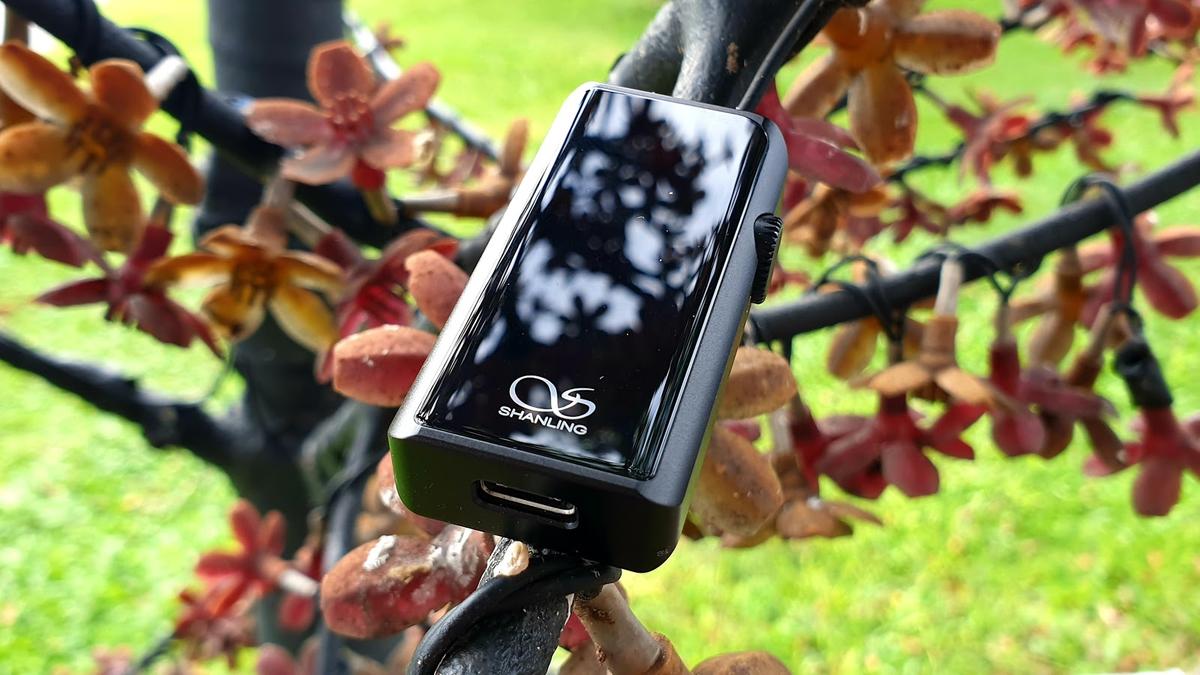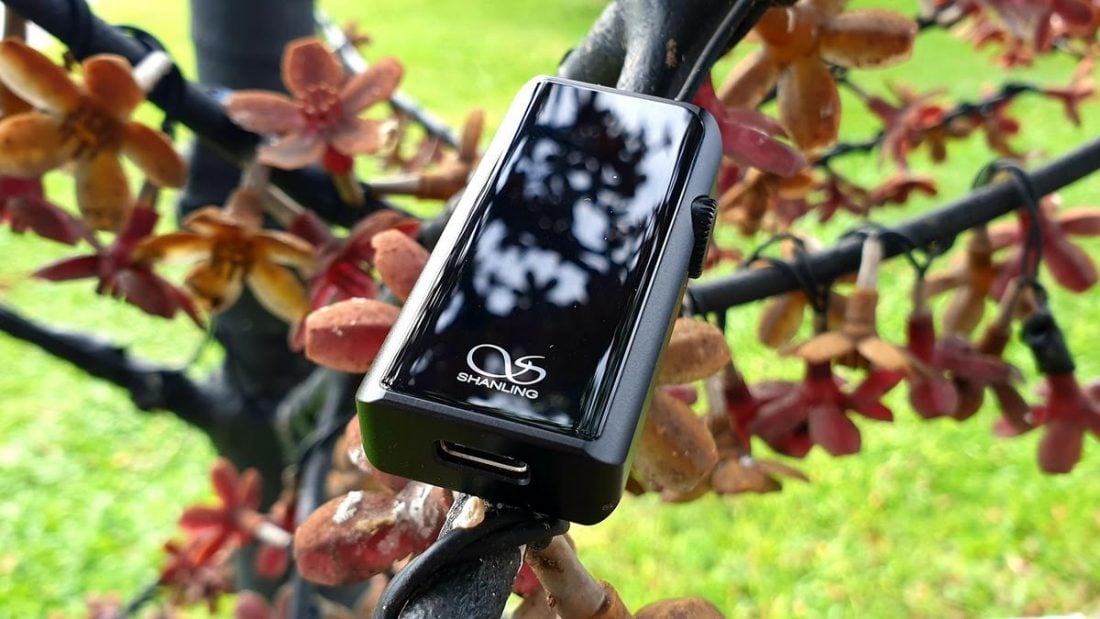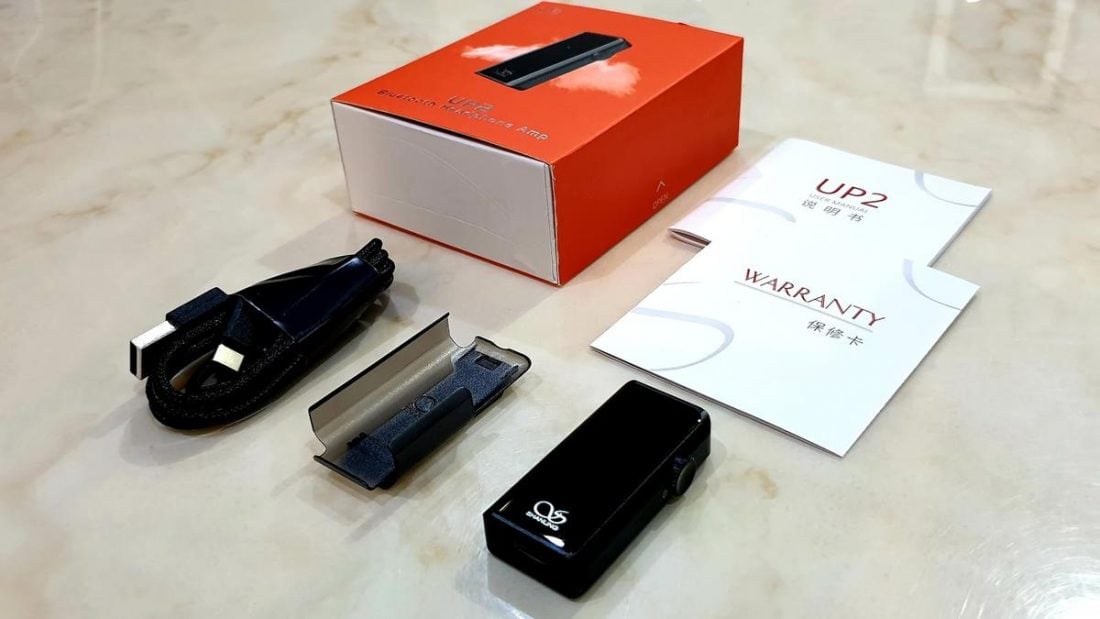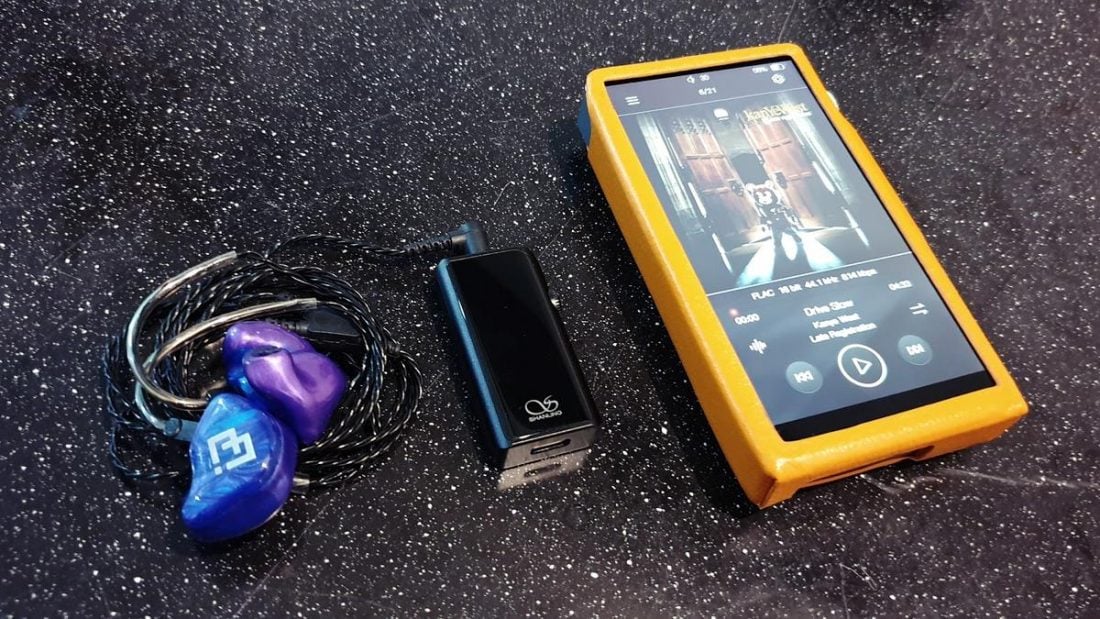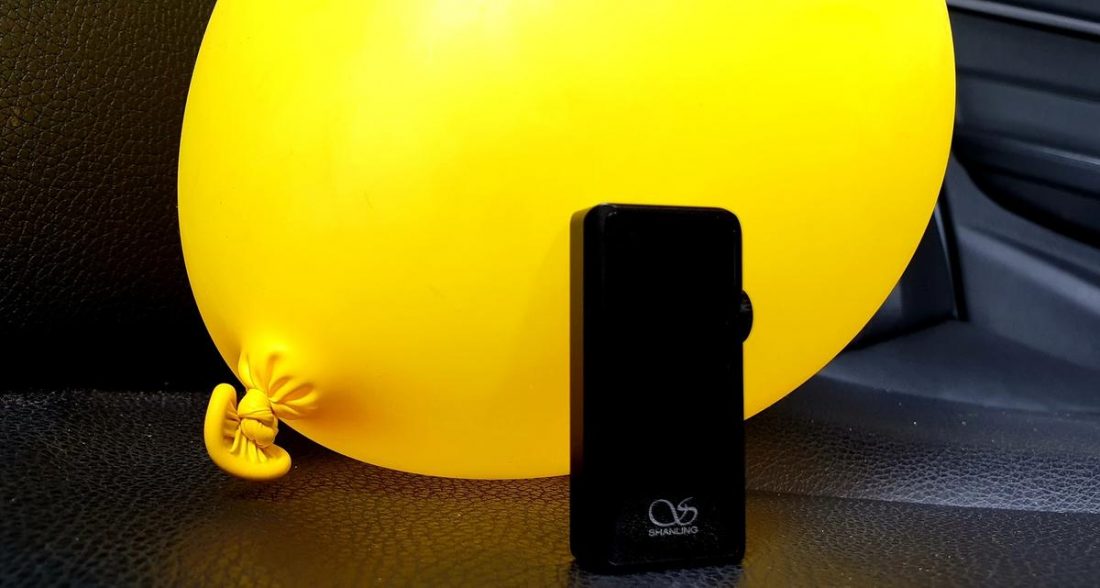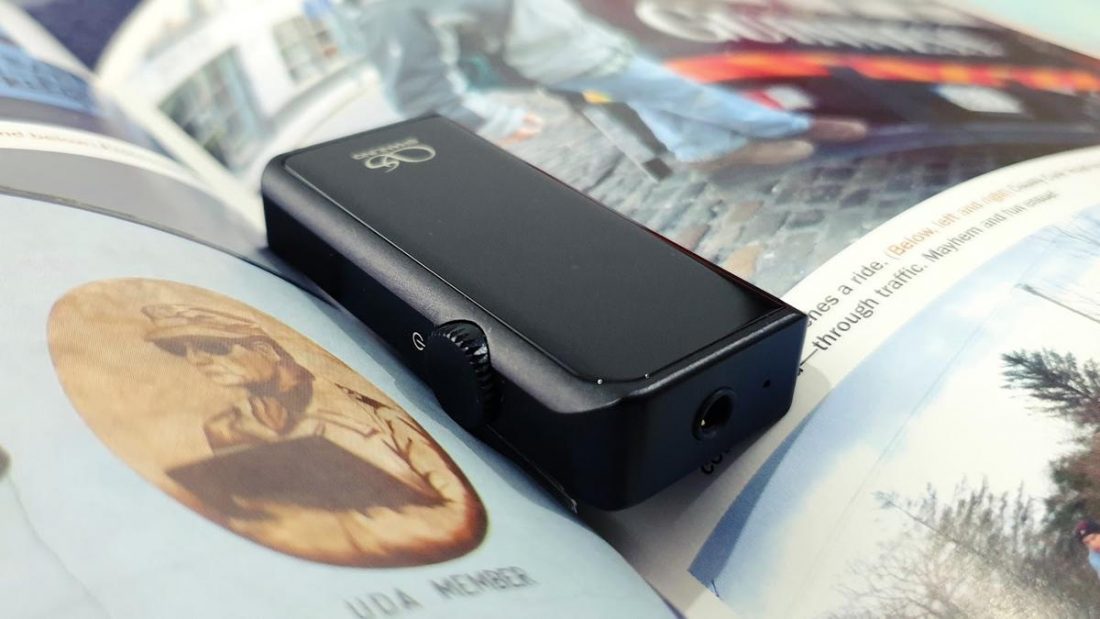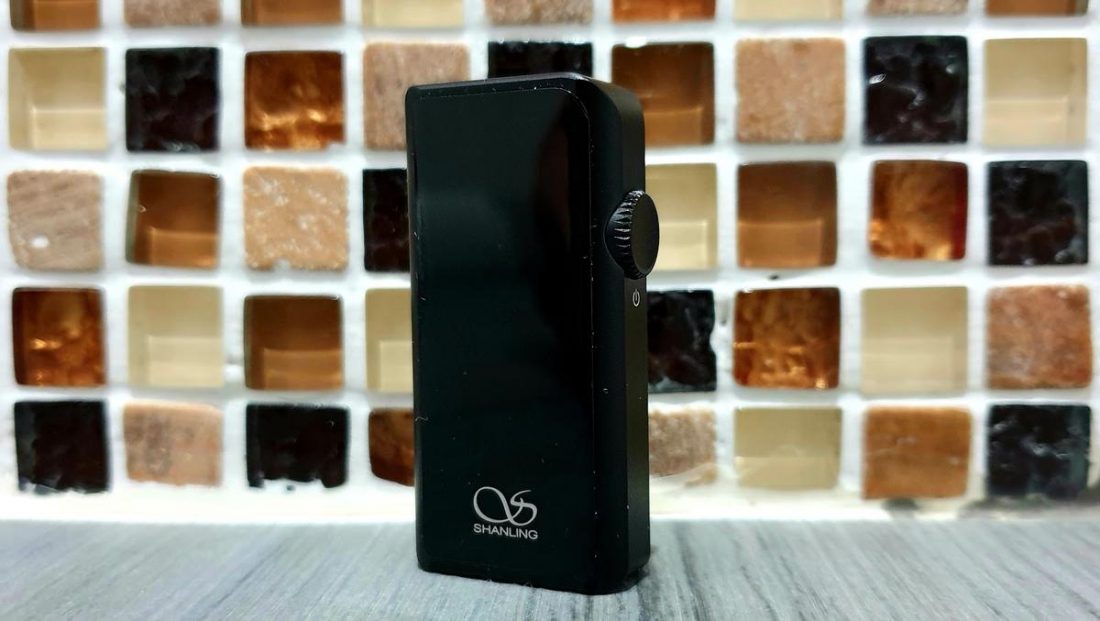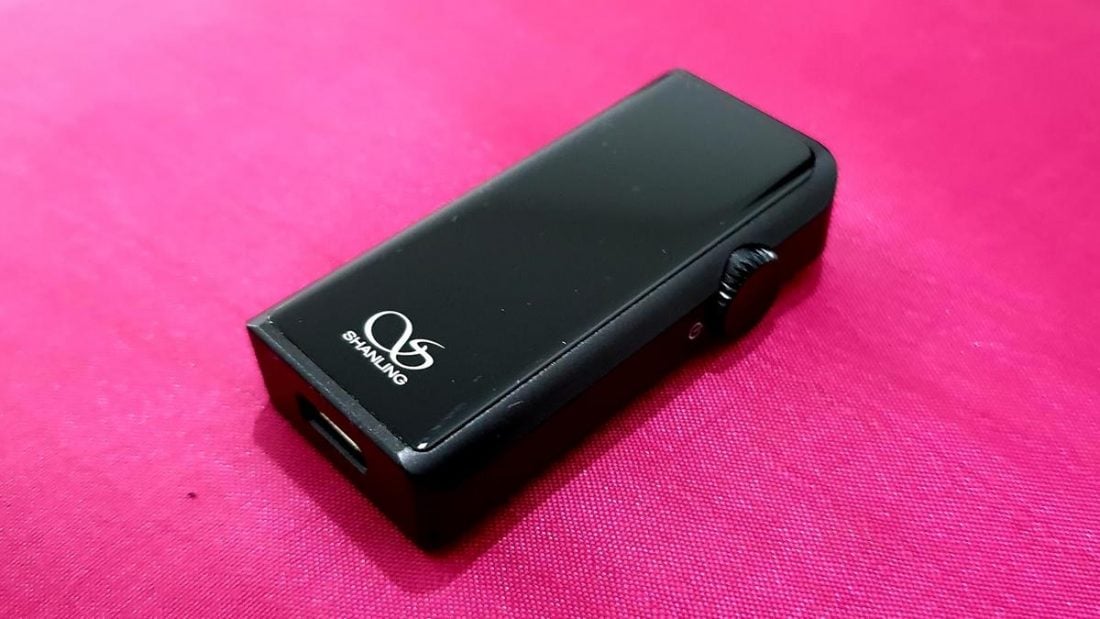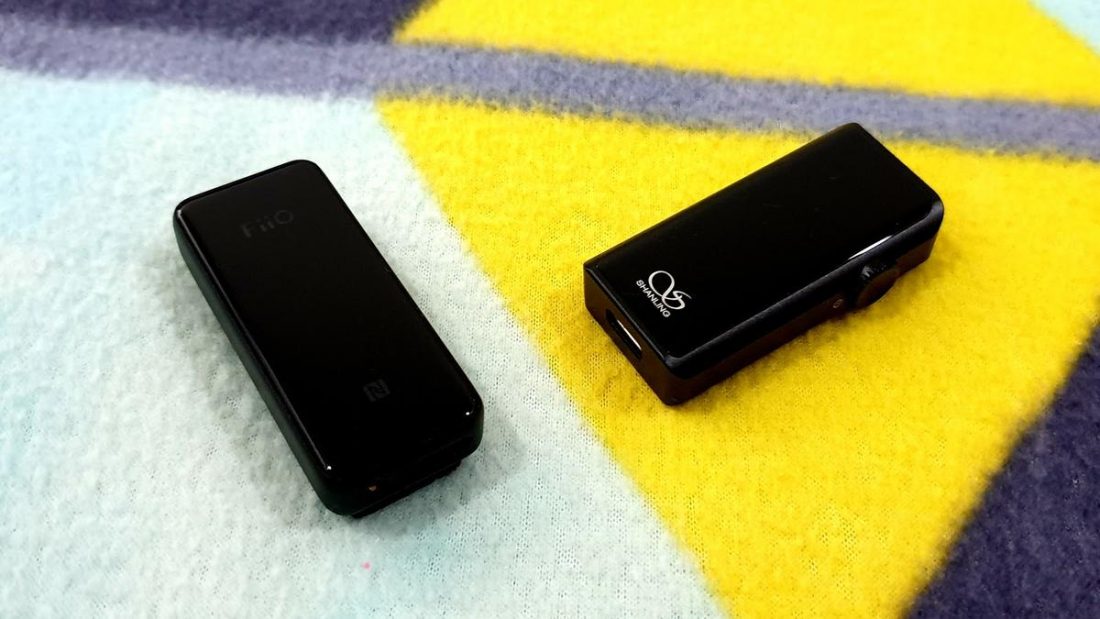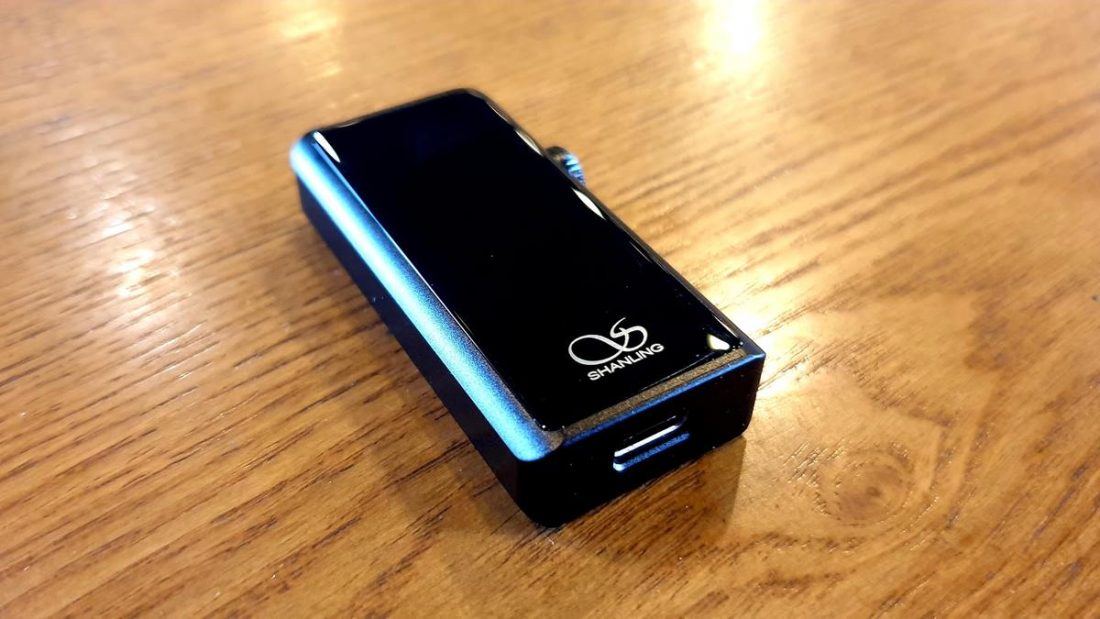I am a product of the 1980’s, which means when some electronic device goes haywire, switching it off and on will probably fix it. That, or a good whack. I’m not averse to technology, just a bit old-skool, so you will find CDs, Blu-Rays and headphone cables taking up a lot of space in my house. Words like streaming, blockchains or clouds give me goosebumps. In my day clouds just brought rain. So when I was asked to review a tech product my hairs stood on end, like Spider-Sense but not as life-threatening. Thankfully it’s just a Bluetooth amplifier/receiver, similar to something I reviewed some time back. In fact, they’re competing products, but more on that later.
The Hustle
Since dipping into the portable Hi-Fi market in 2014, Shanling has developed a reputation of making budget-minded and great-sounding digital audio players (DAPs). But they aren’t resting on their laurels (whatever that is), and diversifying their product range to make even more DAPs, earphones, and here, a Bluetooth amplifier. Laurels are leaves, by the way.
The Bustle
Today we take a look at the Shanling UP2, a portable Bluetooth amplifier, and receiver with a dedicated digital-to-analog converter (DAC), which promises a lightweight solution capable of upgrading your smartphone’s sound quality. The UP2 also connects to any Bluetooth-enabled DAP, so you don’t have to lug a heavy player around to enjoy your music library. The lure of high quality audio is very strong here, as the UP2 supports most wireless codecs, with particular emphasis on LDAC, LHDC, and aptX HD. This means, to audio laymen like you and me, that lossless, high-resolution audio is readily delivered, wirelessly, with this tiny device.
Equipment Used:
Albums Listened:
Technical Specifications:
Supported Bluetooth Codecs: LDAC / LHDC / aptX HD / aptX Low Latency / aptX / AAC / SBC Bluetooth Chip: Qualcomm CSR8675 Audio Chip: ESS Sabre ES9218P Bluetooth version: Bluetooth 5.0 Transmission Distance: 10m Microphone: Knowles SiSonic Output Power: 67mW @ 32Ω Signal to Noise Ratio: 116dB Crosstalk: 72dB Distortion: 0.005% (HWA), 0.05% (others) Output impedance: 0.25Ω Battery Life: 11 hours (SBC) Charging Time: 2 hours Battery Capacity: 400 mAh Power Input: DC 5V/500 mA USB Port: Type-C, supporting driver-free USB DAC Accessories: Separate Clip case, Type-C USB cable, User’s Manual Volume adjustment: Volume wheel with 64 steps Connector: 3.5mm jack, compatible with AUX input Dimensions: 55x27x12 mm Weight: 26 g
Packaging and Accessories
The bright orange box houses the UP2, a USB to USB-C cable, and a uh, plastic shirt clip. There’s also a manual and warranty information. I wish I could squeeze more words out, but there you go, the most no-nonsense and rudimentary of accessory sets. Shanling encourages you to get the UP2 out and start fiddling with it.
Design and Build Quality
Their DAPs and the UP2 are rectangular with a rounded-off upper right corner, paying tribute to Shanling’s early days when the scroll wheel/volume button was there. This uniformity in design is certainly pleasing, reminding me of iPods of different variants sharing the ubiquitous clickwheel. It’s tiny and lightweight, the size of a thumb or chicken nugget. The glossy glass surface is a horrendous fingerprint and scratch magnet front and back though, so those with OCD (fingers pointed at me) will look the other way after handling the UP2. It looks great and feels well-built otherwise, a sturdy structure of metal and glass. Unless you run it over with a car, the UP2 should survive a knock or two.
Pairing and Connectivity
The UP2 has a single button that also acts as a volume knob. Pressing and holding the button will turn on the device and enter pairing mode (lights will flash red and blue). Select “Shanling UP2” from your phone/DAP and that’s it, simple as pie. The UP2 will automatically pair with the last used device, nearly instantly.
A Quickie How-to
So your ultra-portable setup will look like this, with the phone/player up to 10 meters (~32 feet) away. Great for listening while doing household chores. Who am I kidding. Great for walking to the fridge while leaving the player where it is. To pair with another device, press and hold the one and only button for 5 seconds to enter pairing mode again. It’s pain-free and fuss-free pairing, and as advertized, you can leave your audio player up to 10 (unobstructed) meters away before the signal drops. For practical purposes, the signal was clear as day with the phone in my pants pocket and the UP2 in my shirt pocket. Dandy. Both my audio sources, the Samsung Galaxy S9 and iBasso DX220, paired with the UP2 faultlessly. The Qualcomm CR8675 Bluetooth chip might be a few years old, but it’s hard to improve when pairing is this effective. Has anyone ever updated the scissors or a doorknob? Exactly.
Features and Functions
The Wheel of Time
Shanling wants you to know how effective their engineering is, by using one multifunctional button/wheel to handle all functions of the UP2. Sleek and sexy, yes, just a tad confusing for an old timer like me, so you’d need this handy guide on hand so you won’t accidentally trigger the apocalypse.
Power on: Long press for 3.5 seconds Power off: Long press for 3.5 seconds Pairing: Long press for 5 seconds when UP2 is turned off Play/pause: Single click Next track: Double click Previous track: Triple click Answer call: Single click End call: Single click Cancel call: Double click
The wheel controls the volume, with 64 steps to fine-tune the exact loudness you’d like to bestow your ears with. If that’s not enough, you can further control the volume via your audio source, effectively making you the Lord of Loudness.
Codecs of Conduct
The Qualcomm chip enables the UP2 to decipher all wireless audio codecs known to man, but what matters to you are the high-resolution lossless ones, namely LDAC, LHDC, and aptX HD. They deliver sound quality beyond CD quality and are conveniently color-coded so you know the quality of your audio files. The LED at the front panel flashes according to the codec used.
SBC: Blue AAC: Cyan aptX / aptX LL: Purple LDAC: Green LHDC / HWA: White aptX HD: Yellow
Audio Torpedo
Besides being a portable solution, the UP2 can also be used as a USB DAC/amplifier for your laptop. Connect it to your laptop with the USB-C cable, plug in your headphones and press play. Easy peasy. It can’t, however, replace a full-sized desktop DAC, since it can’t go beyond 96kHz/24bit (for people with supersonic hearing), so think of this function as a bonus rather than the main feature.
Juice Box
The UP2 has a 400mAh battery capacity, translating to 11 hours of continuous playback with SBC, the most power-efficient codec. In my testing, the UP2 provided 9 hours of music with LDAC, which is mighty impressive as it lasted a whole workday. And in the event that you (actually me) forget to turn off the UP2 when not listening to music, it goes into deep standby, for up to 200 hours. Imagine a tiny butler on standby for you for 8 straight days, he might actually go nuts but the UP2 won’t. The LED indicator flashes red when battery is low, and takes 2 hours to fully charge.
Sound Quality
Aiming to assess the sound properties of the UP2 rather than the transducers, I used the UP2 with several in-ear monitors (IEMs) and headphones to find common characteristics. The UP2 has a fiesty personality that shines through regardless.
Overall Sound Signature
Imagine the flattest thing you’ve seen. A line on the horizon. An ironing board. Your ex-girlfriend. The UP2 is neutral to a fault, highlighting the audio spectrum from bass to treble in equal measure. Notes have bite and texture, sometimes sounding dry. Remember the analogy of the perfect amplifier being a wire with gain? The UP2 reminds me of that. Besides imparting large doses of unfiltered detail, fast transients, a vividly black background and a soundstage large enough to contain the sound, the UP2 does little else, and leaves the flavoring and coloring all to the transducer. From a purist’s mindset, this is perfection.
Listening Conditions
The main rig for review is iBasso > UP2 > transducer of choice. I tried the UP2 with the Unknown Custom Juno and Cayin YB04, two IEMs with a neutral-ish signature, and the Sennheiser HD660S to test headphone output. Burn-in wasn’t carried out because you can’t improve a wireless connection with prolonged use, can you?
Bass
A long time ago in a galaxy far, far away, I went to the gym consistently. After a month of sweating it out, my body and booty became tighter, firmer, and stopped wobbling like jelly. This level of discipline is reflected in the UP2, which renders bass with tightness, tautness, and a ridiculous amount of texture, like the well-chiseled musculature of a bodybuilder.
A Body in Motion
Subbass extension is superb, exhibiting a bottom end you can feel in your throat. Midbass is weightier but not by a lot, choosing instead to punch fast and hard before getting the hell out of Dodge. Note attacks are rounded, but decay is sharper and textured, with just enough roll-off so you don’t feel slighted. This is a clean bass with details, dynamics and layering maxed out, and a bit of body thrown in. You can make out the placement of every bass note, ebbing and flowing like tiny currents of electricity. Even within the bass, bleed is almost not an issue because of the elite separation. While it doesn’t resonate with familiar warmth and fullness, this bass flavor provides an appeal of its own.
Mids
There is remarkable consistency transitioning from the bass to the mids. They are where you want to hear the details, unfiltered and unaltered. Steeped in the tea of neutrality (or the pool of clarity, you choose), the mids reveal all. Positionally, they are right in front of you, enticing you to enjoy a front-row performance.
The Rush of Blood
Notes ring clear and transparent, clean and articulate. What’s more, there is unrelenting speed segueing from one note to the other, giving off a wispy, ethereal sensation. Layering, like the bass, is brilliant, never flinching even when rendering complex passages. It will uncover everything you hear from a recording, for good or ill. The frontally-placed, headfirst-into-detail tuning equals an engaging factor like no other. Voices and instruments are powerful and dynamic. However, notes are edgy, and can come off dry. Let the transducers do the flavoring while the sources remain as neutral as possible. In terms of airiness, detail levels, and layering ability, the UP2 has very few rivals.
Treble
The UP2’s signature is best depicted as a glass of ice water, flavorless, transparent, and cooling. Ok, downright cold. You’ve enjoyed the drink, and now we only have ice cubes left. Welcome to the UP2 treble.
Batman
The treble, like the world’s greatest detective, shines a light into every chasm and crevice, hoping to uncover any shred of detail that might contribute to the music. It is steadfast and dogged in its duty, operating without fear or favor or flavor. Notes are crispy and airy, with the speed of attack and decay being highlights again. While I detect a hint of smoothness in the note body and finishing, this is not a source that will shy away from bad recordings. If the treble rings and sizzles, it will stay as such without any touching up from the UP2. This is not Photoshop, my friend. This is your wife when she wakes up in the morning without makeup. Are we still talking about music?
Soundstage and Imaging
Like watching a 100-meter race in front of you, the UP2’s soundstage is sufficiently wide, stretching your neck as you go from left to right. Because of the vast space afforded, plus the clean background and relatively lean notes, imaging is simply sublime, with instrument placement precise and clearly defined. This is a huge asset of the UP2. I’m all alone and staring into space…”
Shorthanded
What can be improved, however, is the soundstage depth and height. Owing to the mids’ forward placement, the music can sometimes be too in-your-face, with immersion overload and vocals/instruments invading the cranium. I like a bit of breathing room, because of um, personal space issues.
Comparisons
FiiO BTR3
A comparison a year in the making. The BTR3 is much-loved for its ease of use and easygoing, accessible sound quality. Now we meet the usurper UP2, built and billed as a direct competitor. They even look similar, these shiny black sticks. Their aluminum/glass bodies are equally alluring, although the BTR3 has the tie clip built-in, while UP2’s attached plastic one looks flimsy. Connectivity and battery life are basically similar, as are the functions. The UP2’s multifunctional wheel looks snazzier but has a learning curve, while BTR3’s button-based approach is more direct. The UP2 has the advantage of LDHC support out-of-the-box, but upgrading the BTR3 firmware (however painful) will do the same. The BTR3 has an extra lanyard, but I won’t penalize UP2 for that.
Sound Advice
For sound, they come in two distinct flavors. The BTR3 is smooth, musical, relaxed and somewhat timid, while UP2 is technically competent, unremittingly neutral, and aggressive. The BTR3 warms up the atmosphere for an intimate listen, with boosted bass, colored mids, and attenuated treble. Notes are rounded and blunt in attack, but the natural flow of the music is commendable. The UP2 has a tighter, more disciplined bass, drier mids, and sharper treble. I can’t get over how pleasantly textural their notes are, like running my fingers through fine sand. Detail levels and air are heightened across the board, as is the spaciousness. Listening to the UP2 after the BTR3 is like removing your sunglasses to see a clearer picture. For detail nuts like me, I can’t be happier.
Final Words
The end is nigh for wired audio, still practiced stubbornly and perhaps foolishly by audiofools like me, who like the assuredness and perceived sound quality a cable can bring. Like how dogs have leashes, you know. But with wireless devices advancing faster and further than ever thought possible, perhaps it’s time to let loose the training wheels and fully dive into wireless audio.
Baby Steps
Shanling’s UP2 might be considered a cop-out. Not fully wireless like a smartphone to Earpods setup, the UP2 allows me to use my wired IEMs, just in a lighter package. I can still lord over you with my pure silver cables. The UP2, meanwhile, holds my hands while I take baby-steps towards full adoption of True Wireless Stereo (TWS) earbuds in the future, when sound quality finally catches up. The UP2 is a stellar product. From the design, build materials, connectivity right up to the all-important sound quality that surpasses most smartphones, it excels in every department, and might even give DAPs a run for their money. The UP2 is a well-thought-out device that embraces both old and new technologies, providing a launchpad for people like me to tinker with wireless. What a wonderful time to be in.
